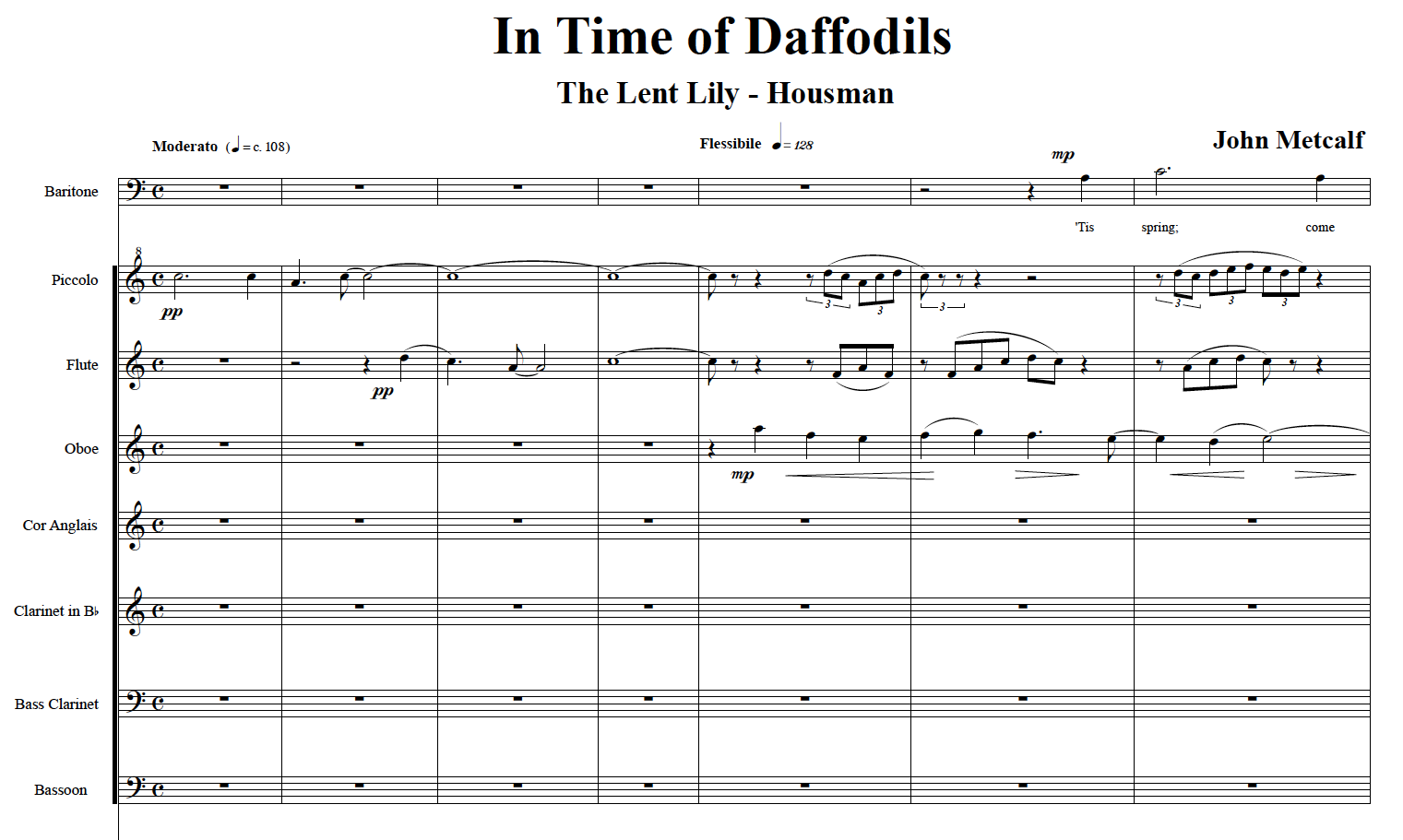Programme Note
‘In Time of Daffodils’ evolved in its own particular way. The starting point was a commission from Jeremy Huw Williams to write a short song cycle for voice and piano. Flowers have inspired many poets and there are, in particular, a number of beautiful poems about daffodils. This was a strong enough impulse to pursue the idea but it was also helpful to have such a clear and consistent theme, and the obvious associations with Spring (when the first performance was to be given) and with Wales further encouraged this approach. Having chosen ‘To Daffodils’ by Herrick, ‘To an Early Daffodil’ by Lowell and the famous Wordsworth poem, I was ready to set to work.
In the meantime, a commission had arrived from BBC Radio 3 for an orchestral work to mark my 60th birthday year. It soon became clear that a much more substantial song cycle was possible and three further poems were added – Housman’s ‘The Lent Lily’, the famous prologue to ‘Endymion’ by Keats and a second Amy Lowell poem – ‘White and Green’. In order to pursue a more symphonic approach to the now much longer cycle, I decided to group the poems into two sets of three and also to make the second set of three a musical paraphrase of the first – the Housman of the Herrick, Keats of Wordsworth and the second Lowell setting a reworking of the first. I also decided to write a short orchestral interlude between the two sets.
I then decided on a final order:
Housman ; Wordsworth ; Lowell
Interlude
Herrick ; Keats ; Lowell
In a further move towards symmetry, I then made specific structural decisions about the tonalities of the settings. The Housman is diatonic to A minor and the Lowell to D major. The central Wordsworth setting contains stanzas in these two tonalities alternating with its own tonality (diatonic to B minor/D flat major). The second sequence of poems follows the same tonal scheme. The aim of this whole approach was to represent in music both the familiarity of the turning/returning year and the different feelings and circumstances that we may encounter at those same times. I also wished to touch on the theme of death and renewal.
The poems are, on the whole, very well known, especially the Wordsworth – which is perhaps the best known of all poems in English. Herrick paints a poignant picture of transience and mortality which I have reflected in a very romantic setting, while Housman evokes a compelling image of a lost rustic world. Amy Lowell’s poems contain sensuous imagery and a bright vibrant energy which are evocative of the flower and the time of year. Coming towards the end of the cycle the Keats extract, drawn from the prologue to his wonderful epic poem Endymion, introduces a new dimension and emphasis.
While all the other poems speak solely through and about nature, Keats reminds us of the comparable experience and solace to be found in the art created by man:
“And such too is the grandeur of the dooms
We have imagined for the mighty dead;
All lovely tales that we have heard or read!
An endless fountain of immortal drink,
Pouring unto us from the heaven’s brink”
The title of the piece is drawn from the first line of a poem by ee cummings (not set).
The first three songs of ‘In Time of Daffodils’ were commissioned by Jeremy Huw Williams with funds made available by the Arts Council of Wales and the National Lottery. The subsequent reworking into a symphonic cycle of six songs with a short orchestral interlude was in response to a commission from BBC Radio 3. The orchestration of the work features prominent roles for solo woodwinds – to reflect the pastoral quality of the piece – and for brass and harp (for their visual association with daffodils). ‘In Time of Daffodils’ may be performed in either the orchestral version or in the version with piano.
